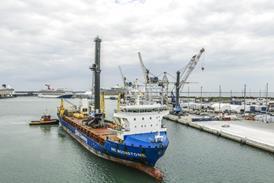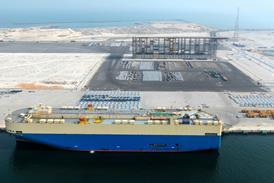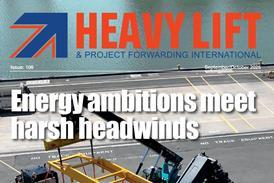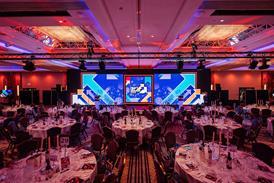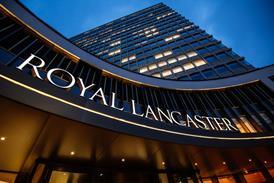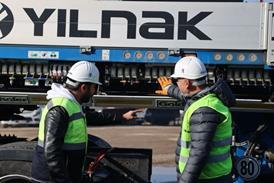Sarens PSG and Haventus, an energy transition facilities provider, have developed an ‘on-land to launch’ approach to accelerate floating offshore wind (FLOW) development out of Ardersier port, Scotland.
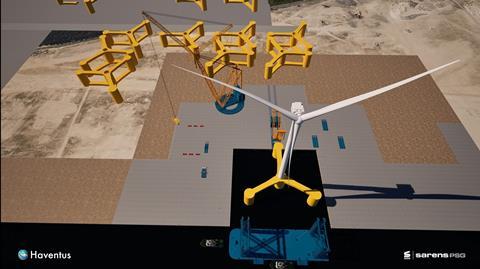
Haventus secured a GBP100 million (USD126.5 million) joint credit facility to develop Ardersier port into a wind energy gateway last year, hoping to capitalise on the approximately 24.5 GW of seabed leased for floating offshore wind energy development in Scottish waters. It is from this base that the ‘on-land to launch’ solution will be deployed, whereby wind project developers can acquire fully assembled floating bases and turbines, which are stored and then launched to the harbour.
Working with Sarens PSG – a joint venture between Sarens and PSG Marine & Logistics to serve the offshore wind and renewables sector across Scotland – a heavy lift solution enables the onshore integration and subsequent launch to the harbour utilising a range of heavy lift equipment from the Sarens fleet. SPMTs transport the floater into position; a heavy lift ring crane to assemble and integrate the wind turbine; and finally, a combination of a skidded gantry crane and strand jack tower system, deployed from a barge, to launch the fully wind turbine-integrated floater to the port and into the water.
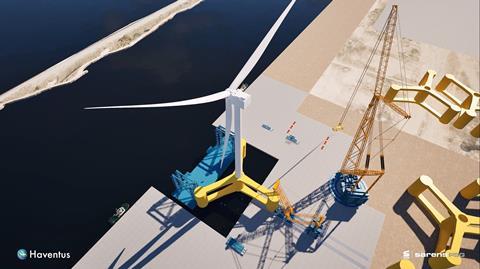
Haventus said this has significant benefits, including shortening supply chains by having a single sourcing site for key components and removing the operational, safety, logistical and engineering complexity that comes with storage and integration activities in the marine environment.
It added that by simplifying transport and installation requirements, the approach also drives down the costs and accelerates floating offshore wind energy development while removing the obstacles of weather and design life variables that must be considered with ‘wet’ storage and integration.
Sarens PSG managing director, Steve Clark, added: “By executing all heavy lifting operations whilst the floater is still onshore, we’re enabling fully integrated wind turbines to be assembled and launched safely, efficiently, and independent of marine weather delays. This can be a milestone for Ardersier, with positive implications for the wider offshore wind industry.”
Ardersier currently has developable land area of around 350 acres (142 ha), with proposals to extend to around 500 acres (202 ha). This makes it one of the few European facilities large enough to provide a land-based solution for such activities.

